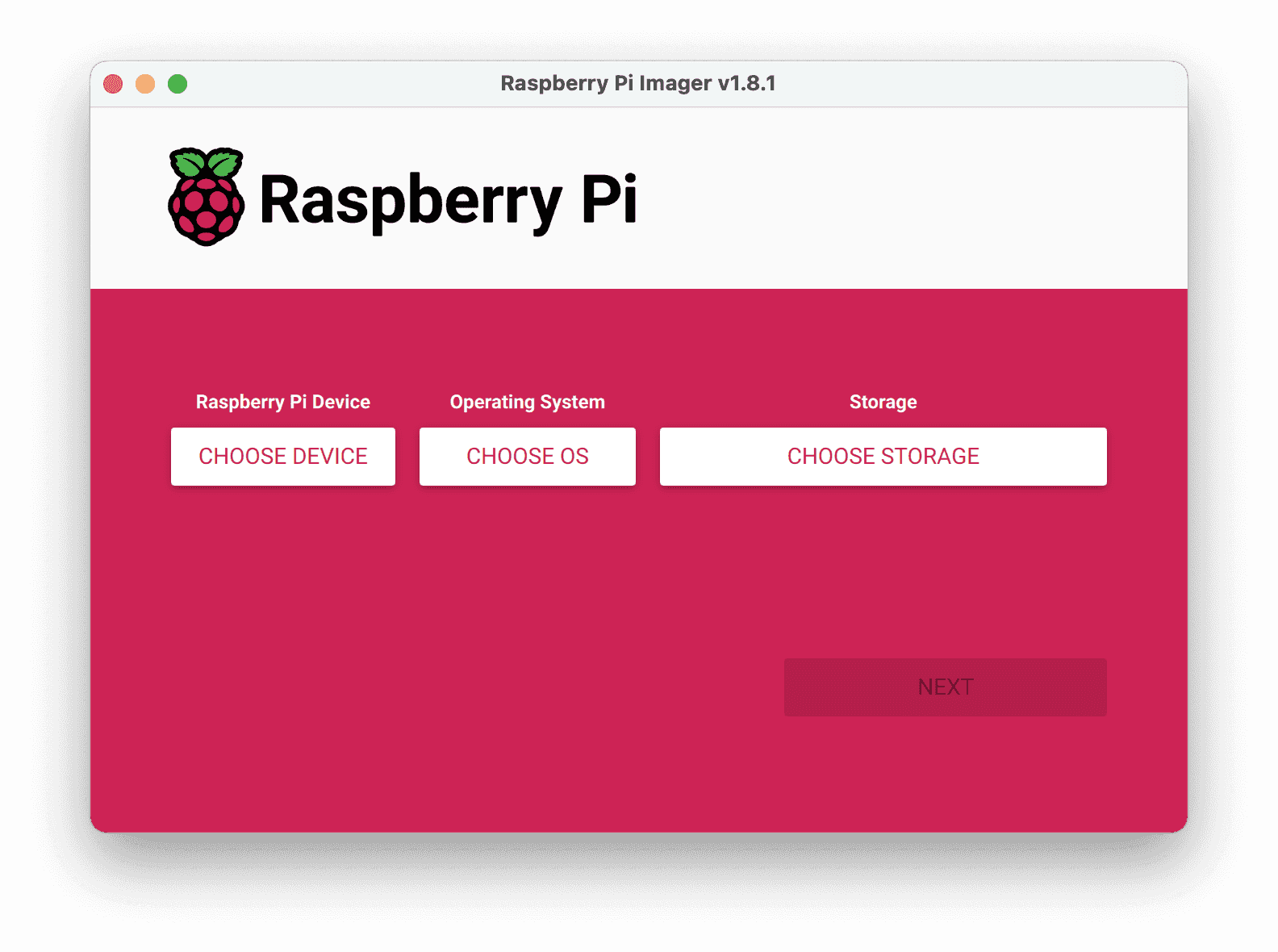Mastering Secure IoT Connections With P2P Protocols On Raspberry Pi
Establishing secure connections for remote IoT devices using peer-to-peer (P2P) protocols on a Raspberry Pi is a vital skill for tech enthusiasts, developers, and IT professionals alike. As the Internet of Things continues to expand, the significance of securing these devices against unauthorized access and data breaches cannot be overstated. This guide will walk you through setting up a secure P2P connection for data exchange on a Raspberry Pi, ensuring your IoT network remains both reliable and protected.
In today's highly connected world, IoT devices are embedded in countless aspects of daily life, from smart homes to advanced industrial automation systems. However, with this proliferation comes the critical need to safeguard these devices and the sensitive data they handle. By mastering the art of securely connecting remote IoT devices using P2P protocols, you can significantly enhance the resilience and safety of your IoT infrastructure.
This comprehensive tutorial will cover every aspect of configuring a secure P2P connection on a Raspberry Pi. From step-by-step instructions to practical tips and troubleshooting advice, this article caters to both beginners and experienced developers alike. Whether you're just starting your IoT journey or seeking to deepen your expertise, this guide will provide valuable insights into IoT security and P2P networking.
- Exploring Cha Eun Woos Tv Shows And Acting Journey
- Lee Sunkyun The Journey Of A Renowned South Korean Actor
Table of Contents:
- Exploring IoT and the Role of Raspberry Pi
- Essential Hardware for Raspberry Pi Setup
- Configuring Software for Secure IoT Connections
- Understanding the Fundamentals of Peer-to-Peer Networks
- Enhancing Security with Encryption Techniques
- A Step-by-Step Guide to Secure P2P Connections on Raspberry Pi
- Addressing Common Challenges and Troubleshooting Tips
- Optimizing Performance for IoT P2P Networks
- Implementing Advanced Security Measures for IoT Devices
- The Future Landscape of IoT and P2P Networking
Exploring IoT and the Role of Raspberry Pi
The Internet of Things (IoT) refers to an interconnected network of physical devices equipped with sensors, software, and communication capabilities, enabling them to exchange data seamlessly. Among the myriad platforms available for experimenting with IoT, the Raspberry Pi stands out as a cost-effective, versatile, and widely accessible option. This credit-card-sized computer serves as an ideal foundation for building secure IoT networks due to its affordability, ease of use, and robust community support.
Raspberry Pi's adaptability makes it an excellent choice for creating secure gateways that facilitate remote access and efficient data exchange between IoT devices. By configuring the Raspberry Pi correctly, it can act as a reliable hub for managing and securing IoT connections, ensuring data integrity and privacy.
- Rose Kennedy Schlossberg A Legacy Of Resilience And Impact
- Johnny Mathis The Timeless Voice Of Elegance And Melody
This section delves into the foundational principles of IoT and highlights the pivotal role Raspberry Pi plays in this expanding ecosystem. Understanding these basics is crucial for anyone aiming to establish secure P2P connections for IoT devices.
Essential Hardware for Raspberry Pi Setup
Before proceeding with the software setup, it's imperative to ensure you have all the necessary hardware components. Below is a comprehensive list of items you'll need to get started:
Core Components
- Raspberry Pi (Model 3 or higher)
- MicroSD Card (16GB or higher)
- Power Adapter (5V, 2A or higher)
- Ethernet Cable or Wi-Fi Adapter
Optional Accessories
- Protective Case for Raspberry Pi
- HDMI Monitor and Keyboard (useful for initial setup)
- USB Drive (for expanded storage capacity)
Equipping yourself with the right hardware lays the groundwork for setting up a secure IoT environment. Once you've gathered all the necessary components, you can move forward with configuring the software environment.
Configuring Software for Secure IoT Connections
Configuring the software environment on your Raspberry Pi is a critical step in establishing secure IoT connections. Follow the steps below to set up your system effectively:
Step 1: Installing the Operating System
Begin by downloading the Raspberry Pi OS from the official website and use a reliable tool like Etcher to flash it onto your MicroSD card. Once the OS is installed, boot up your Raspberry Pi and configure essential settings such as Wi-Fi and locale preferences.
Step 2: Updating the System
Run the following commands to ensure your system is up-to-date:
sudo apt updatesudo apt upgrade
Step 3: Installing Necessary Packages
Install essential packages like SSH, Python, and other tools that will be integral to securing your IoT connections. For example:
sudo apt install sshsudo apt install python3-pip
By meticulously following these steps, you can establish a robust foundation for your Raspberry Pi setup, ensuring it's primed for secure IoT connections.
Understanding the Fundamentals of Peer-to-Peer Networks
A peer-to-peer (P2P) network represents a decentralized architecture where each device functions as both a client and a server, facilitating direct communication without relying on a central server. This structure is particularly advantageous for IoT applications, as it minimizes latency and enhances reliability by eliminating single points of failure.
P2P networks offer several key benefits, including:
- Decentralization: Ensures no single point of failure exists within the network
- Scalability: Seamlessly accommodates additional devices without significant performance degradation
- Efficiency: Facilitates direct communication between devices, optimizing resource utilization
Despite these advantages, P2P networks present unique challenges, such as maintaining security and ensuring data integrity. In the subsequent section, we will explore methods for implementing encryption to safeguard your P2P connections.
Enhancing Security with Encryption Techniques
Encryption plays a pivotal role in securing IoT setups. By encrypting data transmitted between devices, you can safeguard sensitive information from unauthorized access. Below are some commonly employed encryption methods in IoT applications:
SSL/TLS
Secure Sockets Layer (SSL) and Transport Layer Security (TLS) are widely adopted protocols for encrypting data during transmission. Implementing SSL/TLS on your Raspberry Pi involves generating certificates and configuring the necessary services.
SSH
Secure Shell (SSH) provides a secure channel for remote access and file transfers. Enabling SSH on your Raspberry Pi is a straightforward process that can markedly enhance the security of your IoT network.
End-to-End Encryption
End-to-end encryption ensures that data remains encrypted from the sender to the recipient, making it nearly impossible for unauthorized entities to intercept and decipher the information.
Incorporating these encryption methods into your setup fortifies the security of your IoT devices and the data they handle.
A Step-by-Step Guide to Secure P2P Connections on Raspberry Pi
Having covered the fundamentals, let's delve into a detailed step-by-step guide for securely connecting remote IoT devices using P2P protocols on a Raspberry Pi:
Step 1: Configuring Network Settings
Set up your Raspberry Pi to connect to your local network via Ethernet or Wi-Fi. Ensure the network settings are properly configured to enable remote access.
Step 2: Installing P2P Software
Install a P2P software package such as libp2p or BitTorrent on your Raspberry Pi. These tools enable direct communication between devices within your IoT network.
Step 3: Securing the Connection
Implement encryption protocols like SSL/TLS or SSH to secure the P2P connection. Adhere to best practices for certificate management and key exchange to maximize security.
Step 4: Testing the Connection
Once the setup is complete, test the connection by transferring a file between two devices in your IoT network. Verify that the data is transmitted securely and without errors.
Adhering to these steps will help you establish a secure and dependable P2P connection for your IoT devices.
Addressing Common Challenges and Troubleshooting Tips
Even with meticulous planning, issues can arise when setting up a secure IoT P2P connection. Below are some common problems and their corresponding solutions:
Issue: Unable to Connect to Network
Solution: Verify the network settings and ensure the Raspberry Pi is correctly connected to the network. Confirm the IP address and subnet mask.
Issue: Encryption Fails
Solution: Thoroughly review the certificate and key configurations. Ensure all devices within the network utilize the same encryption protocol.
Issue: Slow Data Transfer
Solution: Optimize the network settings and minimize latency by opting for a wired connection over Wi-Fi, if feasible.
Promptly addressing these issues ensures the stability and security of your IoT network.
Optimizing Performance for IoT P2P Networks
Optimizing the performance of your IoT P2P connections can lead to faster data transfer and improved reliability. Consider the following tips for optimizing your setup:
Use Efficient Protocols
Select protocols tailored for IoT applications, such as MQTT or CoAP, which are designed for low-bandwidth environments.
Implement Load Balancing
Utilize load balancing techniques to distribute the workload across multiple devices, reducing the burden on any single device.
Monitor Network Traffic
Regularly monitor network traffic to identify bottlenecks and fine-tune the network configuration accordingly.
By adopting these optimization strategies, you can ensure your IoT network operates at peak efficiency.
Implementing Advanced Security Measures for IoT Devices
Beyond encryption and secure connections, there are additional advanced security measures you can implement to safeguard your IoT devices:
Regular Updates
Consistently update your software and firmware to protect against vulnerabilities and emerging exploits.
Firewall Configuration
Configure firewalls to restrict access to your IoT devices, permitting only trusted devices and services to connect.
Intrusion Detection Systems
Deploy intrusion detection systems (IDS) to monitor for suspicious activities and alert you to potential threats.
Incorporating these advanced security measures enhances the overall security posture of your IoT network.
The Future Landscape of IoT and P2P Networking
As technology continues to advance, the future of IoT and P2P networking appears exceptionally promising. Innovations in areas such as 5G, edge computing, and blockchain are set to transform how IoT devices communicate and interact.
5G networks will offer faster and more reliable connections, enabling real-time data exchange between devices. Edge computing will minimize latency by processing data closer to the source, while blockchain will enhance security through decentralized ledgers.
Staying informed about these developments will prepare you for the evolving landscape of IoT and P2P networking, allowing you to continually enhance the security and functionality of your IoT devices.
Kesimpulan
In summary, establishing secure connections for remote IoT devices using P2P protocols on a Raspberry Pi is an indispensable skill for anyone engaged in IoT technology. By following the steps outlined in this guide, you can create a secure and reliable connection that safeguards sensitive data and preserves the privacy of your IoT network.
We invite you to share your thoughts and experiences in the comments below. If you found this article enlightening, please share it with your network and explore other resources on our site for further insights into IoT and P2P networking.
- Understanding The Millennial Generation Their Impact And Influence
- Exploring The Visionary World Of Joss Whedon

Securely Connect RemoteIoT VPC Raspberry Pi AWS Download Windows A

Securely Connect RemoteIoT VPC Raspberry Pi Free Download For Windows

Securely Connect RemoteIoT P2P SSH Raspberry Pi Download For Windows